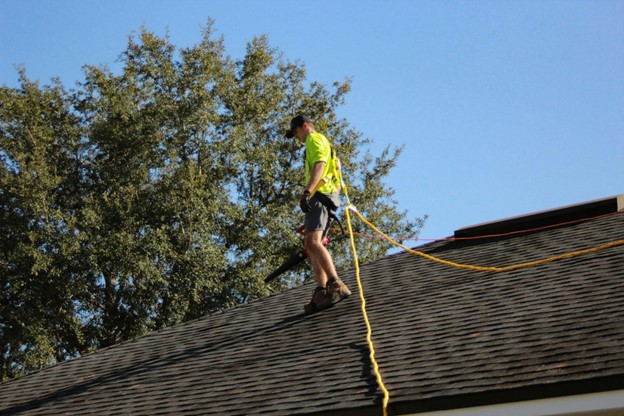Your roof is one of the most critical components of your home, protecting you and your belongings from the elements. However, it’s often overlooked until a problem arises. To avoid costly repairs or premature replacements, regular maintenance is key. In this guide, we’ll explore essential tips and practices to extend the lifespan of your roof.
Professional Inspections and Maintenance
While DIY maintenance is beneficial, hiring a professional for periodic inspections and maintenance is highly recommended. Whether you are looking for roofers in Hilton Head or any other place, roofing experts have the skills, experience, and specialized equipment to identify potential issues early that might be overlooked by the untrained eye. They can spot subtle signs of damage or wear, such as tiny leaks, incipient rot, or structural weaknesses, and provide thorough repairs and maintenance that are crucial for preventing these issues from escalating.
Professionals can also perform more complex tasks, like replacing damaged flashing, repairing significant shingle damage, and ensuring that your roof’s ventilation and insulation systems are functioning correctly. Additionally, regular professional maintenance can extend your roof’s lifespan significantly, saving you money in the long run by preventing costly repairs or premature replacements. By investing in professional roof care, you’re ensuring that your home remains protected and your roof remains in optimal condition for years to come.
Inspect Regularly
Regular inspections are the cornerstone of roof maintenance. Schedule inspections at least twice a year, preferably in spring and fall. Look for signs of damage such as:
Missing or damaged shingles
Curling or blistering shingles
Cracked caulking or rusted flashing
Moss or algae growth
Sagging areas
Water stains on the ceiling
Addressing these issues promptly can prevent them from escalating into more significant problems.
Clean Gutters and Downspouts
Clogged gutters and downspouts can lead to significant water backup, causing damage not only to your roof but also to your home’s foundation and overall structural integrity. When gutters are obstructed by debris such as leaves, twigs, and dirt, rainwater cannot flow freely, which can result in overflow and water seeping under the roof, leading to leaks, rot, and mold growth. This overflow can also pool around the base of your home, compromising the foundation and potentially causing basement flooding.
To prevent these issues, it’s essential to clean your gutters regularly. Remove any accumulated debris and ensure that downspouts are clear and directing water away from your home’s foundation. Regular gutter maintenance not only protects your roof but also helps maintain the integrity of your entire home, preventing costly repairs and prolonging the lifespan of your roofing system.
Trim Overhanging Branches
Overhanging branches pose a significant risk to your roof’s health and longevity. These branches can constantly rub against the roof, causing wear and tear on shingles, which leads to premature aging and potential leaks. The friction can also remove the protective granules on shingles, making them more susceptible to the elements.
Additionally, overhanging branches provide a convenient pathway for pests like squirrels, raccoons, and insects, which can infiltrate your attic and cause further damage. To prevent these issues, regularly trim any branches that extend over your roof. This not only protects the shingles but also reduces the accumulation of leaves and debris in your gutters. Moreover, maintaining trees near your home is crucial for minimizing the risk of falling limbs during storms, which can cause severe damage to your roof and home. Regular pruning and tree care ensure that your roof remains safe and intact through all seasons.
Check for Water Damage
Water damage can be insidious, gradually causing rot, weakening structural components, and fostering mold growth. It’s crucial to regularly inspect your attic for signs of water intrusion, such as damp insulation, water stains on the ceiling or walls, and visible mold growth. Even minor leaks can lead to significant problems if left unaddressed, including compromised wood beams and the deterioration of insulation, which can affect your home’s energy efficiency.
Pay special attention to areas around roof penetrations, such as chimneys, vents, and skylights, as these are common entry points for water. If you identify any signs of water damage, it’s essential to address leaks promptly. This may involve repairing or replacing damaged shingles, sealing cracks in the roof, or improving ventilation to reduce moisture levels. By staying vigilant and proactive in checking for water damage, you can prevent small issues from escalating into costly repairs, ensuring the longevity and integrity of your roof.
Repair and Replace Shingles
Damaged or missing shingles significantly compromise your roof’s integrity, exposing your home to potential water damage, leaks, and energy loss. Regularly inspect your roof for signs of shingle damage, such as cracks, curling, or missing pieces. Promptly replace any missing shingles and repair damaged ones to maintain the protective barrier of your roof. While minor repairs might be manageable as a DIY project, it’s often best to hire a professional roofer for complex repairs.
Professionals ensure proper installation, which is crucial for the longevity and performance of your roofing system. They possess the necessary expertise and tools to handle the job safely and effectively, preventing future issues that can arise from improper repair. Investing in professional repair not only restores the roof’s functionality but also extends its lifespan, safeguarding your home against the elements and maintaining its structural integrity for years to come.

Regular maintenance is the key to extending the lifespan of your roof and avoiding costly repairs or replacements. By following these maintenance tips and staying proactive, you can ensure your roof continues to protect your home for years to come. Remember, when in doubt, consult with a professional roofer for expert guidance and assistance.

Recent Comments